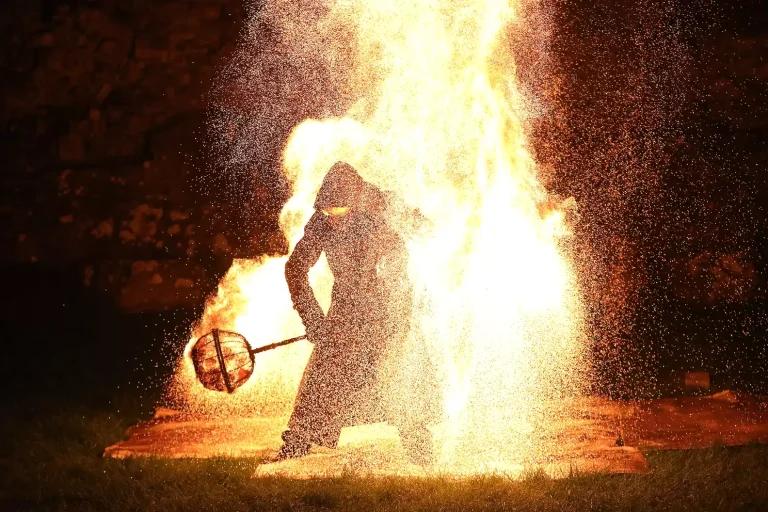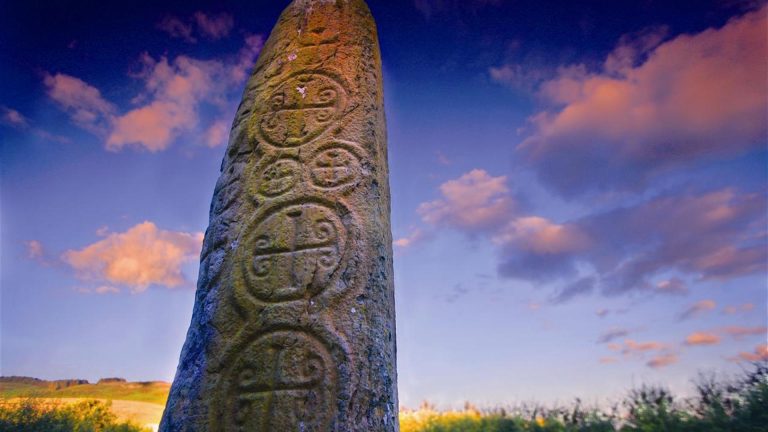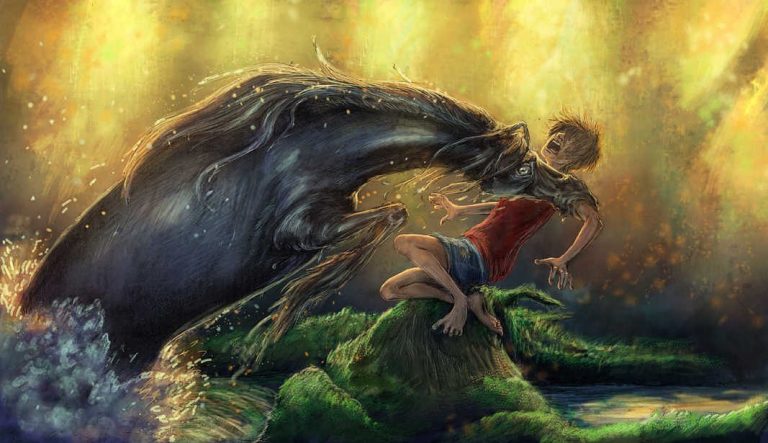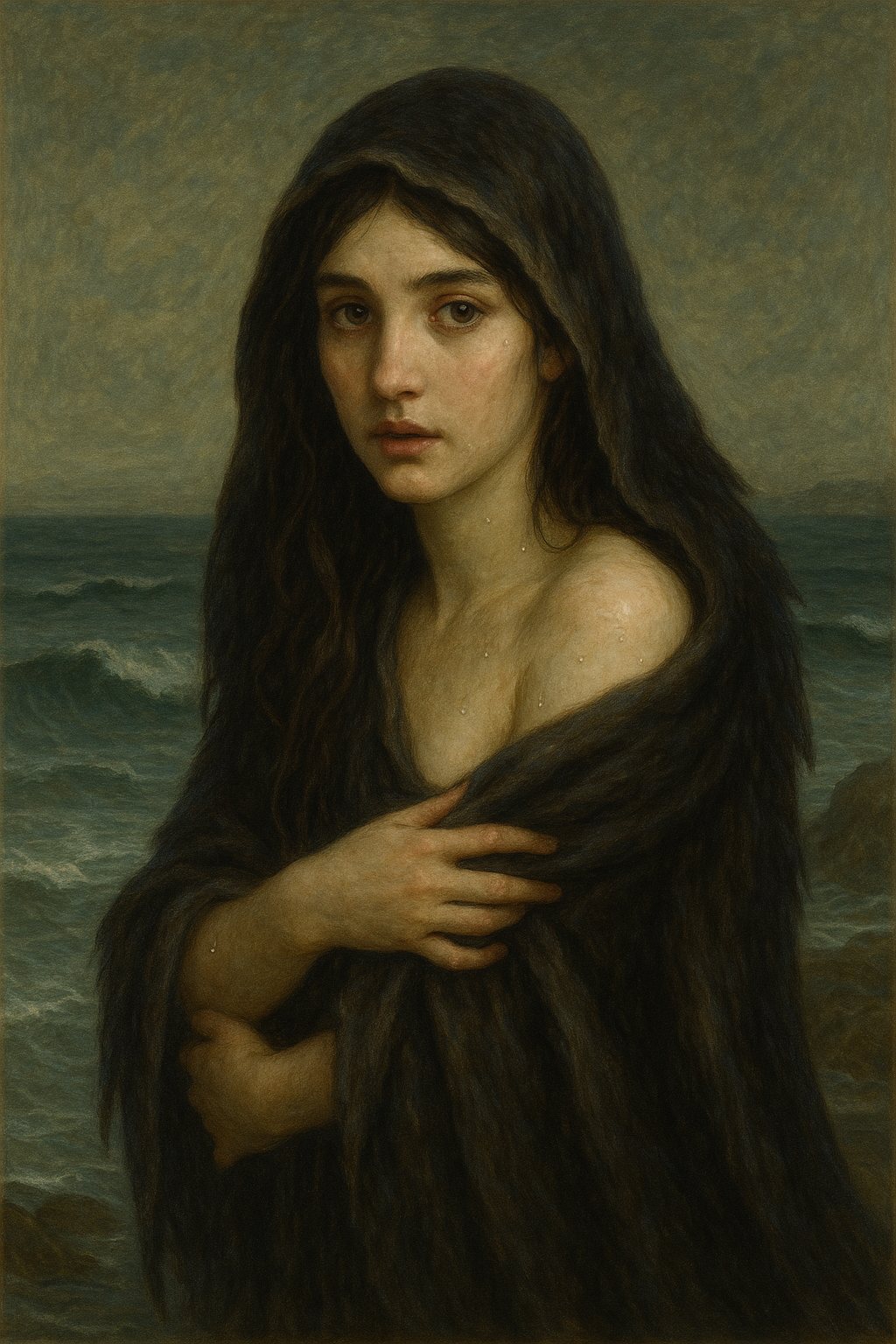
In the windswept coastal landscapes of Ireland, where the Atlantic whispers ancient secrets, the Selkie emerges as one of the most enchanting figures in Celtic folklore.
Known as the Selkie creature, these shapeshifting beings transform from seals to humans by shedding their Selkie pelt, weaving tales of love, longing, and the eternal pull of the sea.
Unlike the bloodthirsty creatures of Irish vampire lore, Selkies embody a bittersweet blend of magic and melancholy. This 3000-word exploration dives deep into Selkie mythology, answering key questions, and debunking myths.
Whether you’re drawn to the romance of the Selkie mythology marriage or the mystique of the Selkie seal, join us as we unravel the lore of Ireland’s seal shapeshifters. For more on Ireland’s supernatural tales, visit Secret Ireland’s folklore archives.
The Enchanting World of the Selkie Creature
Selkie mythology is rooted in the Celtic traditions of Ireland, Scotland, and the Orkney and Shetland Islands, where the sea is both a lifeline and a mystery. The Selkie creature is a seal in its natural form but can shed its Selkie pelt to take human shape, often appearing as a beautiful man or woman.
These stories, passed down through oral tradition, are particularly vivid in places like Selkie Tullaghan, a coastal village in County Leitrim where locals still share tales of seal folk dancing under the moonlight.
Unlike the predatory vampires of Irish vampire lore, Selkies are complex figures, neither wholly good nor evil, whose stories explore themes of freedom, love, and sacrifice.
The Selkie dress—a poetic term for their pelt—is central to their mythology, as its theft by a human often traps a Selkie in a human life, leading to the iconic Selkie mythology marriage.
FAQs About Selkie Mythology
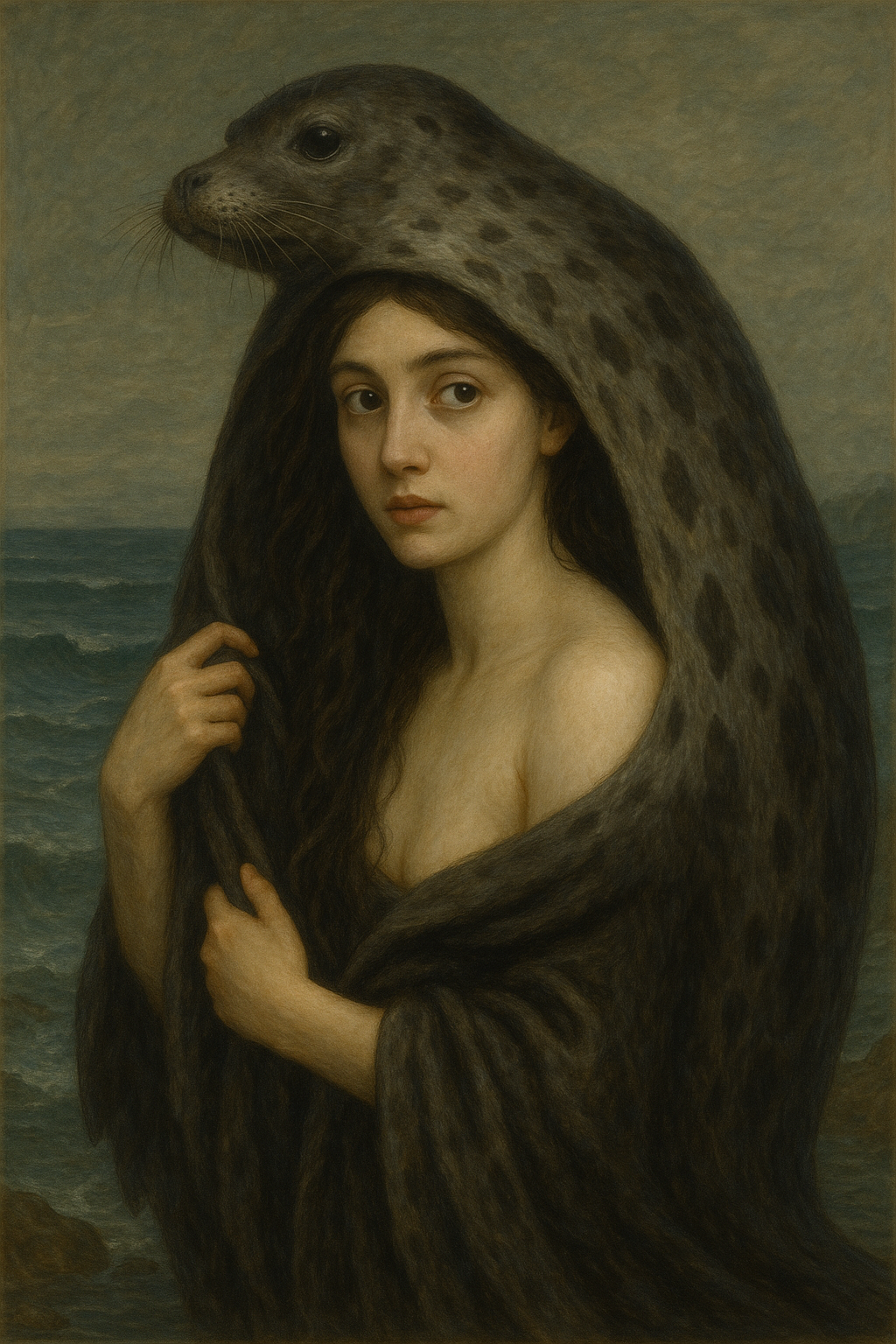
What is a Selkie in mythology?
In Selkie mythology, a Selkie is a shapeshifting creature that transitions between seal and human form by shedding or donning its Selkie pelt. Found in Irish, Scottish, and Orcadian folklore, Selkies are often depicted as beautiful humans who emerge from the sea to dance or interact with mortals.
The most famous tales involve a human stealing a Selkie’s pelt, forcing them into a Selkie mythology marriage. For example, in a story from Selkie Tullaghan, a fisherman hides a Selkie woman’s pelt, compelling her to marry him and bear his children.
However, her longing for the sea drives her to reclaim her pelt and return to her aquatic home, leaving her family behind.
Unlike the malevolent Abhartach in Irish vampire lore, Selkies embody themes of freedom and the tension between land and sea. Their stories, documented in works like John Gregorson Campbell’s Superstitions of the Highlands and Islands of Scotland, reflect Celtic reverence for the ocean’s mysteries.
What is a Selkie in Ireland?
In Ireland, a Selkie (or “silkie”) is a seal shapeshifter tied to coastal communities, particularly in counties like Donegal, Leitrim, and Kerry. The Selkie creature is often portrayed as a woman who emerges from the sea, shedding her Selkie pelt to dance or seek human companionship.
In SelUNE Tullaghan, County Leitrim, local legends tell of Selkies mingling with fishermen, their beauty captivating those who witness their transformation.
A common Irish tale involves a man stealing a Selkie’s Selkie dress (pelt), trapping her in a human life. These stories, unlike the dark tales of Irish vampires at Secret Ireland’s folklore archives, emphasize longing and loss rather than horror. Irish Selkies are deeply tied to the sea, reflecting Celtic beliefs in the ocean as a liminal space between worlds.
What is the difference between a siren and a Selkie?
While both sirens and Selkies are associated with the sea, they differ significantly in nature and intent. Sirens, rooted in Greek mythology, are seductive creatures who lure sailors to their deaths with enchanting songs, often depicted as bird-women or mermaids.
In contrast, the Selkie creature in Selkie mythology is a shapeshifter who transforms from a seal to a human using a Selkie pelt. Selkies don’t typically intend harm; their stories, like those in Selkie Tullaghan, focus on love, loss, and the desire for freedom.
A Selkie might marry a human and live peacefully until her pelt is reclaimed, whereas a siren’s goal is destruction. For example, a Selkie in a Selkie mythology marriage may leave her human family out of longing for the sea, not malice, unlike a siren’s deadly intent. This distinction highlights the romantic melancholy of Selkies versus the predatory nature of sirens.
How do you say “Selkie” in Irish?
In Irish (Gaelic), “Selkie” is often rendered as róinín (meaning “little seal”) or simply selkie, as the term has been adopted into English from Scottish Gaelic “selch.” The word reflects the Selkie seal’s dual nature, emphasizing its connection to the sea.
In Irish folklore, terms like maighdean mhara (sea maiden) are also used for Selkie mermaid-like figures, though this term more commonly refers to mermaids.
The pronunciation of “róinín” (ROH-neen) is lyrical, fitting the poetic nature of Selkie mythology. Unlike the dark terminology of Irish vampire lore, Selkie names evoke the gentle mystery of the ocean.
Are kelpies Irish or Scottish?
Kelpies are primarily associated with Scottish folklore, though their influence extends to Ireland due to shared Celtic roots. A kelpie is a malevolent water horse that lures humans to ride it, only to drown them in rivers or lochs. While some Irish tales feature similar creatures, like the each uisce (water horse), kelpies are distinctly Scottish.
In contrast, the Selkie creature is prominent in both Irish and Scottish lore, with stories like those in Selkie Tullaghan highlighting their presence in Ireland.
Unlike the predatory kelpie, the Selkie seal is more benign, focusing on transformation and love rather than destruction. Both creatures, however, reflect Celtic fascination with water’s dual nature as life-giving and dangerous.
What are the sirens in Irish mythology?
Irish mythology lacks sirens in the Greek sense, but figures like the Merrow (Irish mermaids) and Lhiannan Shee share similarities. The Merrow, or maighdean mhara, is an Irish mermaid who sometimes lures sailors with her beauty, though she’s less malevolent than Greek sirens.
The Lhiannan Shee, a fairy-like being, seduces men and drains their life force, resembling the siren’s deadly allure. Unlike the Selkie creature, which transforms via a Selkie pelt and seeks love or freedom, these figures can be dangerous. Irish tales, unlike Irish vampire stories, emphasize enchantment over outright destruction, but the Merrow and Lhiannan Shee carry a darker edge than the Selkie.
Are Selkies good or bad?
Selkies are neither inherently good nor bad in Selkie mythology. They are complex beings, driven by their connection to the sea and their Selkie pelt. In stories like those from Selkie Tullaghan, Selkies are often sympathetic figures, trapped in human lives through stolen pelts and yearning for their oceanic home.
A Selkie in a Selkie mythology marriage may love her human family but ultimately leave to reclaim her Selkie dress, causing heartbreak without malice.
However, some tales depict male Selkies seducing human women, leading to abandonment. Unlike the malevolent Abhartach vampire in Irish vampire lore, Selkies are more tragic than evil, embodying the tension between freedom and duty.
What is the spiritual meaning of a Selkie?
The spiritual meaning of a Selkie in Selkie mythology centers on transformation, duality, and the search for belonging. The Selkie seal represents the soul’s connection to the natural world, particularly the sea, a liminal space in Celtic spirituality. The act of shedding the Selkie pelt symbolizes vulnerability and the sacrifice of one’s true nature for love or duty, as seen in Selkie mythology marriage tales. Spiritually, Selkies teach the importance of honoring one’s authentic self, as their longing for the sea reflects the soul’s pull toward its true home. In places like Selkie Tullaghan, locals view Selkies as symbols of freedom and the consequences of denying one’s essence, contrasting with the darker spiritual themes of Irish vampire lore.
What is an Irish mermaid called?
An Irish mermaid is called a Merrow, or maighdean mhara (sea maiden) in Gaelic. Unlike the Selkie mermaid, who transforms via a Selkie pelt, Merrows are aquatic beings with fish-like tails, often wearing a magical cap (cohuleen druith) that allows them to live underwater. Merrows can be benevolent, marrying humans and bearing children, or malevolent, luring sailors to their doom. In Selkie mythology, Selkies are more closely tied to seals than fish, and their stories, like those in Selkie Tullaghan, focus on shapeshifting and loss rather than seduction. Both creatures, however, reflect Ireland’s deep connection to the sea.
Can a human turn into a Selkie?
In traditional Selkie mythology, humans cannot naturally become Selkies, as the Selkie creature is a distinct supernatural being born with the ability to shapeshift via its Selkie pelt. However, some tales suggest humans with Selkie ancestry (from a Selkie mythology marriage) may exhibit seal-like traits, such as webbed fingers or an affinity for the sea. In modern interpretations, like those in fantasy literature, humans might transform through magic or curses, but this isn’t part of classic lore. In Selkie Tullaghan, stories focus on Selkies becoming human, not vice versa, emphasizing their longing to return to the sea.
What powers do Selkies have?
Selkies possess the power of shapeshifting, transitioning between seal and human form by donning or shedding their Selkie pelt. This transformation, central to Selkie mythology, allows them to live in both aquatic and terrestrial worlds. They are often depicted as exceptionally beautiful in human form, with an almost hypnotic allure, as seen in tales of Selkie mythology marriage. Some stories attribute to Selkies the ability to control sea creatures or influence tides, though these powers are less explicit than those of figures like the Abhartach vampire in Irish vampire lore. Their greatest power lies in their dual nature, embodying the liminal space between worlds.
What is the difference between a kelpie and a Selkie?
A kelpie is a malevolent water horse from Scottish (and sometimes Irish) folklore, luring humans to ride it before drowning them, while a Selkie creature is a shapeshifting seal who transforms into a human via a Selkie pelt. Kelpies are predatory and dangerous, thriving on deception, whereas Selkies, as seen in Selkie Tullaghan tales, are tragic figures driven by love or longing. A Selkie mythology marriage often ends with the Selune returning to the sea, while a kelpie encounter typically ends in death. Both reflect Celtic water mythology but differ in intent and narrative tone.
Selkie Mythology in Literature and Media
Selkie mythology has inspired countless works, from traditional ballads like “The Great Silkie of Sule Skerry” to modern novels like Mara Freeman’s Grail of the Summer Stars, which weaves Selkie themes into fantasy. Films like The Secret of Roan Inish (1994) bring the Selkie seal to life, depicting a family’s connection to these creatures. The Selkie dress motif—where a stolen pelt traps a Selkie in a human life—resonates in these stories, emphasizing themes of freedom and identity. For more on Ireland’s mythical creatures, explore Secret Ireland’s folklore archives.
The Cultural Legacy of Selkie Tullaghan and Beyond
In places like Selkie Tullaghan, County Leitrim, Selkie stories remain alive in local culture, with tales of seal folk dancing on beaches or marrying fishermen. The Selkie pelt is a powerful symbol, representing autonomy and the pull of one’s true nature. Unlike the dark Abhartach vampire in Irish vampire lore, Selkies offer a softer, more poignant narrative, reflecting Ireland’s deep connection to the sea. Coastal communities still honor these tales through festivals and storytelling, keeping Selkie mythology vibrant.
Conclusion: The Enduring Magic of Selkie Mythology
Selkie mythology captivates with its blend of romance, transformation, and the eternal call of the sea. From the Selkie creature’s shapeshifting via its Selkie pelt to the heartbreak of a Selkie mythology marriage, these tales offer a window into Celtic spirituality and Ireland’s coastal heritage. Whether in Selkie Tullaghan or modern media, Selkies remain timeless symbols of freedom and duality. For more on Ireland’s mythical creatures, dive into Secret Ireland’s folklore collection. Let the Selkie seal inspire you to explore the magic of Ireland’s shores.
